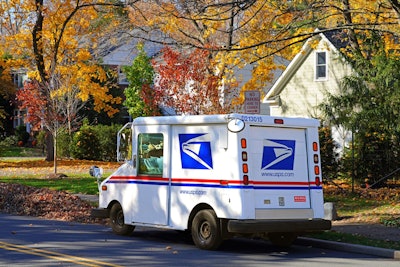
The United States Postal Service pledges it will release 5,000 electric trucks in its fleet as part of its mission to become more environmentally friendly and stay on budget, in what it's calling is its Next Generation Delivery Vehicle (NGDV) program. Many of its fleets consist of vehicles more than 30 years old, which include inefficient gasoline engines and outdated safety aspects. These NGDVs are said to be larger but more fuel efficient than the current Long Life Vehicle (LLV), and includes air conditioning, 360 degree cameras, automatic front and rear braking and a driver air bag. Since powertrain technology may change significantly throughout the 20-year life of the NGDV, USPS selected a flexible design platform that can accommodate advancements in technology. It provides a vehicle platform that can be delivered with either an internal combustion engine or battery electric drive train technology.
Per PR Newswire:
- In preparing its Environmental Impact Statement ("EIS") under NEPA, the Postal Service also consulted with several federal agencies and continues to consult with them as it moves to complete the NEPA process. The NEPA law ensures federal agencies carefully consider environmental impacts and reasonable alternatives to a proposed course of action, and the Postal Service believes it has fully satisfied the requirements of the statute.
- The NGDV power train mix in the proposed action that is being considered under NEPA would have positive environmental impacts as compared with the current LLVs due to fewer required trips and better emission controls. These controls would decrease tailpipe emissions and help improve air quality when compared to the LLVs they are intended to replace.
- The Postal Service's cost estimates include the price of charging infrastructure rather than assuming the availability of public charging, because Postal vehicles must be charged at Postal Service facilities in bulk to accommodate the operational and logistical needs of its carriers. The Postal Service is analyzing state and local electrical grid capacity to determine potential necessary upgrades at the grid-level.
"When you're an independent government entity running billion-dollar annual losses, and with a Congressional mandate to operate in a financially sustainable manner, we are compelled to act prudently in the interests of the American public. However, that responsibility should not be mistaken for an ambivalent commitment to operating a cleaner Postal vehicle fleet for our country," says postmaster general and USPS CEO Louis DeJoy. "Moreover, comparisons of the Postal Service to private sector multi-national corporations that report yearly profits in the billions of dollars, and that are not required to go to 161 million delivery addresses in all climates and topographies six days per-week, are not relevant in view of our perilous financial condition and universal service mission. We will be resolute in making decisions that are grounded in our financial situation and what we can realistically achieve, while pushing hard to take delivery of safer, cleaner vehicles by next year. Given our large fiscal deficits and significant financial challenges, Congress is well aware of the additional resources that would be required if Congress would prefer the Postal Service to accelerate the electrification of our delivery vehicle fleet as a matter of public policy."




















